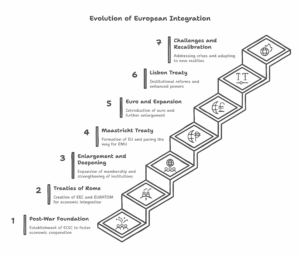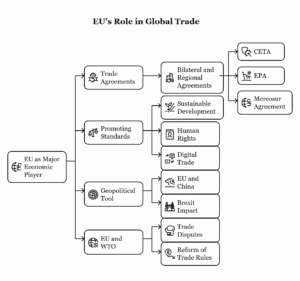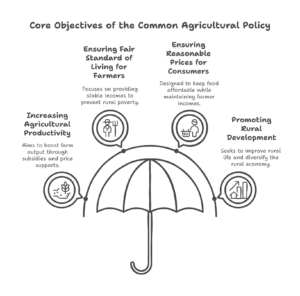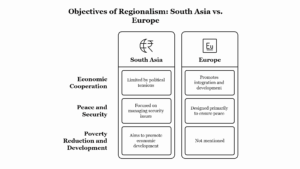-
Continue reading →: Evolution of the Constitution of Canada
The Constitution of Canada has evolved over centuries, influenced by British colonial law, local needs, and global political developments. It is a reflection of Canada’s transition from a British colony to a fully independent nation. The journey of Canada’s constitutional evolution can be divided into several key stages. Early Foundations:…
-
Continue reading →: Characteristics of liberal internationalism
Liberal internationalism is a political ideology and foreign policy approach that advocates for international cooperation, the promotion of democracy, the rule of law, and the protection of human rights on a global scale. Rooted in the liberal tradition, this ideology emphasizes the potential for progress in international relations through diplomacy,…
-
Continue reading →: Social and economic status of Asian and African refugees in Canada
Canada is known for its open-door policy towards refugees, and over the years, it has become a prominent destination for refugees from around the world, including those from Asia and Africa. While these refugees often find refuge from conflict, violence, and persecution, their social and economic status in Canada remains…
-
Continue reading →: Features of Canadian multiculturalism
Multiculturalism in Canada is a defining characteristic of the country’s social and political landscape. It refers to the recognition and promotion of cultural diversity, where various ethnic, racial, and cultural groups are encouraged to preserve their unique identities while integrating into Canadian society. The development of multiculturalism in Canada has…
-
Continue reading →: Ideological and social basis of the separatist movement in Canada
The separatist movement in Canada, particularly Quebec’s sovereignty movement, has been one of the most significant and enduring political phenomena in the country’s history. The movement has been deeply rooted in the ideological and social foundations of Quebec nationalism, and it has sought to achieve greater political autonomy or outright…
-
Continue reading →: Features of self-government in Canada
Self-government in Canada is a concept deeply rooted in the country’s historical development and the evolution of its political and constitutional structures. The country’s unique blend of federalism and parliamentary democracy has shaped its form of self-governance, with powers and responsibilities shared between the federal government and the provinces. At…
-
Continue reading →: Nature of Women’s Movement in Canada
The women’s movement in Canada has evolved over the years from grassroots efforts to a well-organized, multi-faceted social movement that has significantly influenced the country’s political, social, and legal landscape. The movement has centered on issues such as gender equality, reproductive rights, economic justice, political representation, and violence against women,…
-
Continue reading →: Features of Canadian party system
Canada’s political landscape is shaped by a multi-party system that operates within a parliamentary democracy and a federal system. The country’s party system is dynamic, and political parties play a central role in shaping Canadian politics by offering different policy alternatives, representing diverse interests, and participating in the formation of…
-
Continue reading →: Role of language in Canadian politics
Language plays a crucial role in Canadian politics, reflecting the country’s multicultural identity and its dual cultural heritage rooted in both English and French. As a bilingual nation, Canada has a unique relationship with language that shapes its political landscape, social integration, and national unity. Language issues in Canada often…
-
Continue reading →: Nature of relationships among Executive, Legislature, and Judiciary in Canada
Canada’s system of governance is based on the principles of a constitutional monarchy and a parliamentary democracy. This system functions within the framework of the British North America Act of 1867, which laid down the federal structure, and the Constitution Act of 1982, which formally recognized the rights and freedoms…
-
Continue reading →: Phases of evolution of the Canadian Constitution
The Canadian Constitution, which serves as the supreme legal framework governing the country, has evolved over time through various phases. This evolution reflects Canada’s journey from a colony under British rule to a fully independent nation with its own legal and political identity. The Constitution is a complex amalgamation of…
-
Continue reading →: How the issues of national security impact Canada’s foreign policy
National security is a core element of any nation’s foreign policy, as it directly affects a country’s ability to safeguard its sovereignty, maintain territorial integrity, and ensure the well-being of its citizens. For Canada, a country with a long-standing commitment to multilateralism, diplomacy, and human rights, national security issues have…
WELCOME!
Yearly Archive
Categories List
- biodiversity
- Canada
- culture
- democracy
- economy
- European Union
- ignou
- india
- International Relations
- nature
- news
- political-philosophy
- political-science
- sustainability
- Uncategorized
- UPSC
Tag Cloud
agriculture ai business Canada china climate climate-change conservation diversity ethics european-union farming feminism finance gandhi health history ignou india KNOWLEDGE liberty mahatma-gandhi marxism nationalism nonviolence philosophy political-philosophy political-science political-theory politics poverty PSC religion renewable-energy russia socialism sociology sustainability sustainable-agriculture sustainable-living technology terrorism travel UPSC women
Term List
- africa
- agriculture
- ai
- aristotle
- bangladesh
- bjp
- business
- Canada
- china
- christianity
- climate
- climate-change
- conservation
- critical-theory
- digital-marketing
- diversity
- ecology
- elections
- ethics
- europe
- european-union
- faith
- farming
- fascism
- featured
- feminism
- feminist
- finance
- frankfurt-school
- freedom
- fundamentalism
- gandh
- gandhi
- gardening
- gender
- gender-equality
- global-warming
- government
- health
- herbs
- history
- human-rights
- ignou
- india
- inequality
- intellectual-property
- italy
- karl-marx
- KNOWLEDGE
- language
- law
- learning
- lenin
- liberty
- lifestyle
- linguistics
- mahatma-gandhi
- marx
- marxism
- mental-health
- MPS
- multicultural
- multiculturalism
- nationalism
- natural-remedies
- nonviolence
- organic-farming
- patents
- philosophy
- political-philosophy
- political-science
- political-theory
- politics
- pollution
- poverty
- PSC
- recycling
- religion
- renewable-energy
- russia
- socialism
- sociology
- soviet-union
- spirituality
- sustainability
- sustainable-agriculture
- sustainable-living
- teaching
- technology
- terrorism
- trademarks
- travel
- UPSC
- water
- water-conservation
- wellness
- wildlife
- women
- women-empowerment





